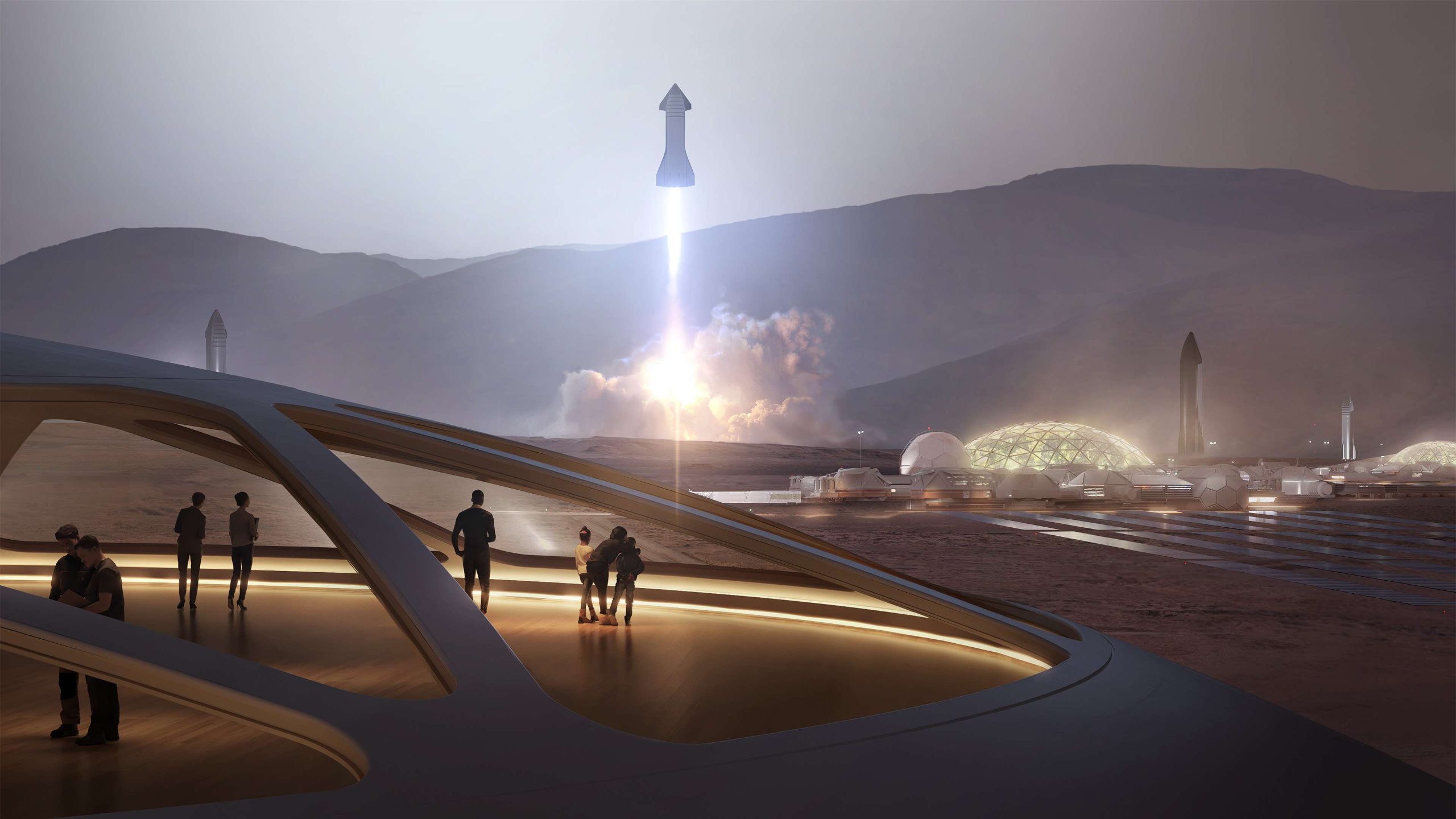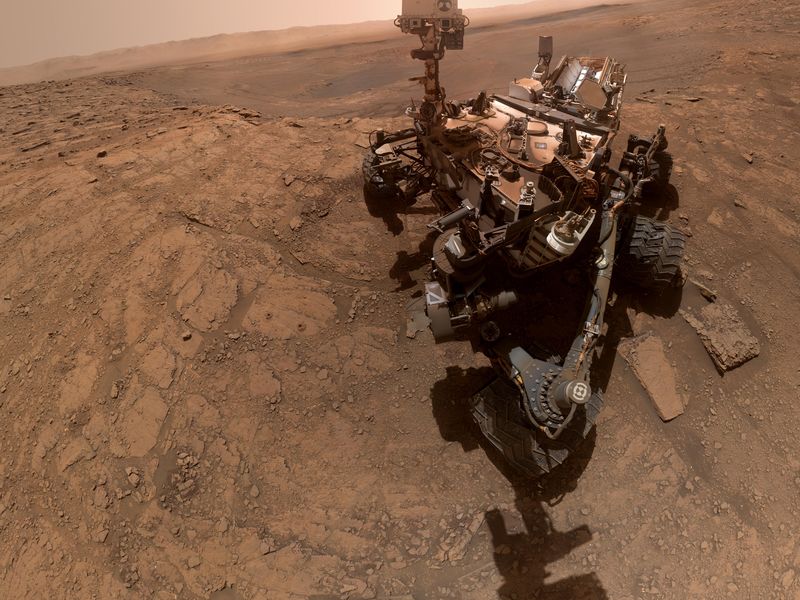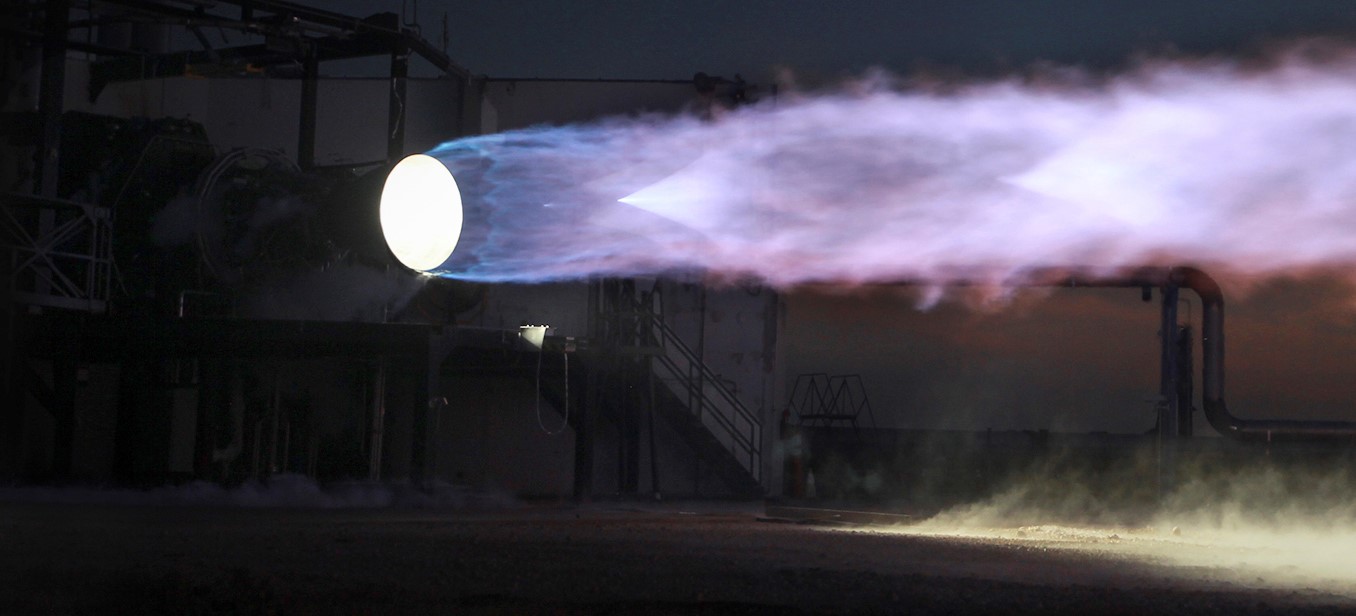

News
SpaceX’s Elon Musk and his plans to send 1 million people to Mars
Elon Musk has big plans for Mars and it’s no secret that the SpaceX founder and CEO envisions a future where humans inhabit more than one planet, but how do we get there?
In a series of tweets, Musk outlined a plan to build a city on Mars by 2050, and fill it with 1 million people.
That may seem a bit outlandish but here’s how it would work.
SpaceX operates a fleet of Falcon 9 rockets that routinely launch and land, depositing satellites, cargo and soon people into space. However, in order to reach Mars, Musk and SpaceX need an even larger, more powerful rocket. That’s where Starship comes in.
In stark contrast to the classic black-and-white paint scheme of the Falcon family of rockets, Starship sports a shiny, stainless steel skin that gives off a futuristic vibe. And in true SpaceX fashion, the 387-foot ship will be reusable.
Starship, which is currently in development for future deep-space travel, will be able to ferry as many as 100 passengers beyond low-Earth orbit. The way to achieving that goal is by reducing the cost of spaceflight. He would like for anyone who wants to go to Mars, to be able to.

“Needs to be such that anyone can go if they want, with loans available for those who don’t have money,” Musk wrote.
To that end, Musk said he wants to build a fleet of at least 1,000 Starships—and launch at least three of them every day.
The Starship system is the latest in SpaceX’s troupe of increasingly larger rockets. In 2018, the California-based aerospace company launched and landed its Falcon Heavy rocket for the first time, generating 5 million pounds of thrust from the rocket’s 27 engines. But even that’s not powerful enough for Mars-based missions.
“Megatons per year to orbit are needed for life to become multi-planetary,” Musk tweeted on Thursday.

To date, the heaviest payload to successfully land on Mars was the Curiosity rover, which touched down on the red planet in 2012. That rover weighed in at 1 metric ton (2,200 lbs.). Much heavier payloads will be required if a city is to build on Mars. NASA, SpaceX and others around the world are currently working on ways to land even larger payloads.
Starship is one method currently in development. Combined with its Super Heavy booster would be powered by 41 next-generation Raptor engines, making it the most powerful launch system ever created—even more powerful than the Saturn V moon rocket. Each launch would pack enough thrust to send more than 100 tons (equivalent to seven fully loaded school buses’ worth of mass) and 100 people into orbit at a time.
But the ship would also be able to navigate the tenuous Martian atmosphere and land safely on the red planet’s surface.
Musk estimates that a fleet of 1,000 Starships, able to tote 100 megatons of stuff to Mars, would be required to build a permanent settlement. That fleet could transport about 100 passengers each, totaling 100,000 people per year.
Musk said a lot of work still needs to be done, especially in regards to propellant production. The Raptor engines Musk plans on using are powered by methane (as opposed to the Kerosene and liquid oxygen that power SpaceX’s Falcon series).

Mars has a generous supply of methane, which Musk hopes could be used to establish refueling depots on the red planet.
There’s a lot of work to do if humanity is to reach Mars. SpaceX is currently working around the clock to build its next prototype of the Starship spacecraft. (The previous mockup exploded during testing, but did prove that the craft could get off the ground.)
If all goes well with this iteration, we may see a Starship prototype fly again soon.

News
Tesla China quietly posts Robotaxi-related job listing
Tesla China is currently seeking a Low Voltage Electrical Engineer to work on circuit board design for the company’s autonomous vehicles.

Tesla has posted a new job listing in Shanghai explicitly tied to its Robotaxi program, fueling speculation that the company is preparing to launch its dedicated autonomous ride-hailing service in China.
As noted in the listing, Tesla China is currently seeking a Low Voltage Electrical Engineer to work on circuit board design for the company’s autonomous vehicles.
Robotaxi-specific role
The listing, which was shared on social media platform X by industry watcher @tslaming, suggested that Tesla China is looking to fill the role urgently. The job listing itself specifically mentions that the person hired for the role will be working on the Low Voltage Hardware team, which would design the circuit boards that would serve as the nervous system of the Robotaxi.
Key tasks for the role, as indicated in the job listing, include collaboration with PCB layout, firmware, mechanical, program management, and validation teams, among other responsibilities. The role is based in Shanghai.
China Robotaxi launch
China represents a massive potential market for robotaxis, with its dense urban centers and supportive policies in select cities. Tesla has limited permission to roll out FSD in the country, though despite this, its vehicles have been hailed as among the best in the market when it comes to autonomous features. So far, at least, it appears that China supports Tesla’s FSD and Robotaxi rollout.
This was hinted at in November, when Tesla brought the Cybercab to the 8th China International Import Expo (CIIE) in Shanghai, marking the first time that the autonomous two-seater was brought to the Asia-Pacific region. The vehicle, despite not having a release date in China, received a significant amount of interest among the event’s attendees.
Elon Musk
Elon Musk and Tesla AI Director share insights after empty driver seat Robotaxi rides
The executives’ unoccupied tests hint at the rapid progress of Tesla’s unsupervised Robotaxi efforts.

Tesla CEO Elon Musk and AI Director Ashok Elluswamy celebrated Christmas Eve by sharing personal experiences with Robotaxi vehicles that had no safety monitor or occupant in the driver’s seat. Musk described the system’s “perfect driving” around Austin, while Elluswamy posted video from the back seat, calling it “an amazing experience.”
The executives’ unoccupied tests hint at the rapid progress of Tesla’s unsupervised Robotaxi efforts.
Elon and Ashok’s firsthand Robotaxi insights
Prior to Musk and the Tesla AI Director’s posts, sightings of unmanned Teslas navigating public roads were widely shared on social media. One such vehicle was spotted in Austin, Texas, which Elon Musk acknowleged by stating that “Testing is underway with no occupants in the car.”
Based on his Christmas Eve post, Musk seemed to have tested an unmanned Tesla himself. “A Tesla with no safety monitor in the car and me sitting in the passenger seat took me all around Austin on Sunday with perfect driving,” Musk wrote in his post.
Elluswamy responded with a 2-minute video showing himself in the rear of an unmanned Tesla. The video featured the vehicle’s empty front seats, as well as its smooth handling through real-world traffic. He captioned his video with the words, “It’s an amazing experience!”
Towards Unsupervised operations
During an xAI Hackathon earlier this month, Elon Musk mentioned that Tesla owed be removing Safety Monitors from its Robotaxis in Austin in just three weeks. “Unsupervised is pretty much solved at this point. So there will be Tesla Robotaxis operating in Austin with no one in them. Not even anyone in the passenger seat in about three weeks,” he said. Musk echoed similar estimates at the 2025 Annual Shareholder Meeting and the Q3 2025 earnings call.
Considering the insights that were posted Musk and Elluswamy, it does appear that Tesla is working hard towards operating its Robotaxis with no safety monitors. This is quite impressive considering that the service was launched just earlier this year.
Elon Musk
Starlink passes 9 million active customers just weeks after hitting 8 million
The milestone highlights the accelerating growth of Starlink, which has now been adding over 20,000 new users per day.

SpaceX’s Starlink satellite internet service has continued its rapid global expansion, surpassing 9 million active customers just weeks after crossing the 8 million mark.
The milestone highlights the accelerating growth of Starlink, which has now been adding over 20,000 new users per day.
9 million customers
In a post on X, SpaceX stated that Starlink now serves over 9 million active users across 155 countries, territories, and markets. The company reached 8 million customers in early November, meaning it added roughly 1 million subscribers in under seven weeks, or about 21,275 new users on average per day.
“Starlink is connecting more than 9M active customers with high-speed internet across 155 countries, territories, and many other markets,” Starlink wrote in a post on its official X account. SpaceX President Gwynne Shotwell also celebrated the milestone on X. “A huge thank you to all of our customers and congrats to the Starlink team for such an incredible product,” she wrote.
That growth rate reflects both rising demand for broadband in underserved regions and Starlink’s expanding satellite constellation, which now includes more than 9,000 low-Earth-orbit satellites designed to deliver high-speed, low-latency internet worldwide.
Starlink’s momentum
Starlink’s momentum has been building up. SpaceX reported 4.6 million Starlink customers in December 2024, followed by 7 million by August 2025, and 8 million customers in November. Independent data also suggests Starlink usage is rising sharply, with Cloudflare reporting that global web traffic from Starlink users more than doubled in 2025, as noted in an Insider report.
Starlink’s momentum is increasingly tied to SpaceX’s broader financial outlook. Elon Musk has said the satellite network is “by far” the company’s largest revenue driver, and reports suggest SpaceX may be positioning itself for an initial public offering as soon as next year, with valuations estimated as high as $1.5 trillion. Musk has also suggested in the past that Starlink could have its own IPO in the future.








